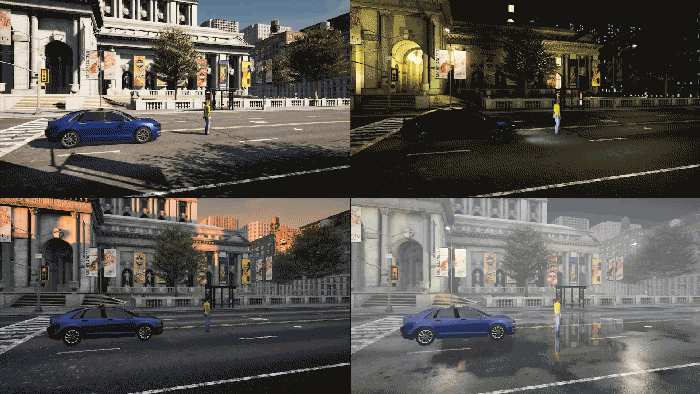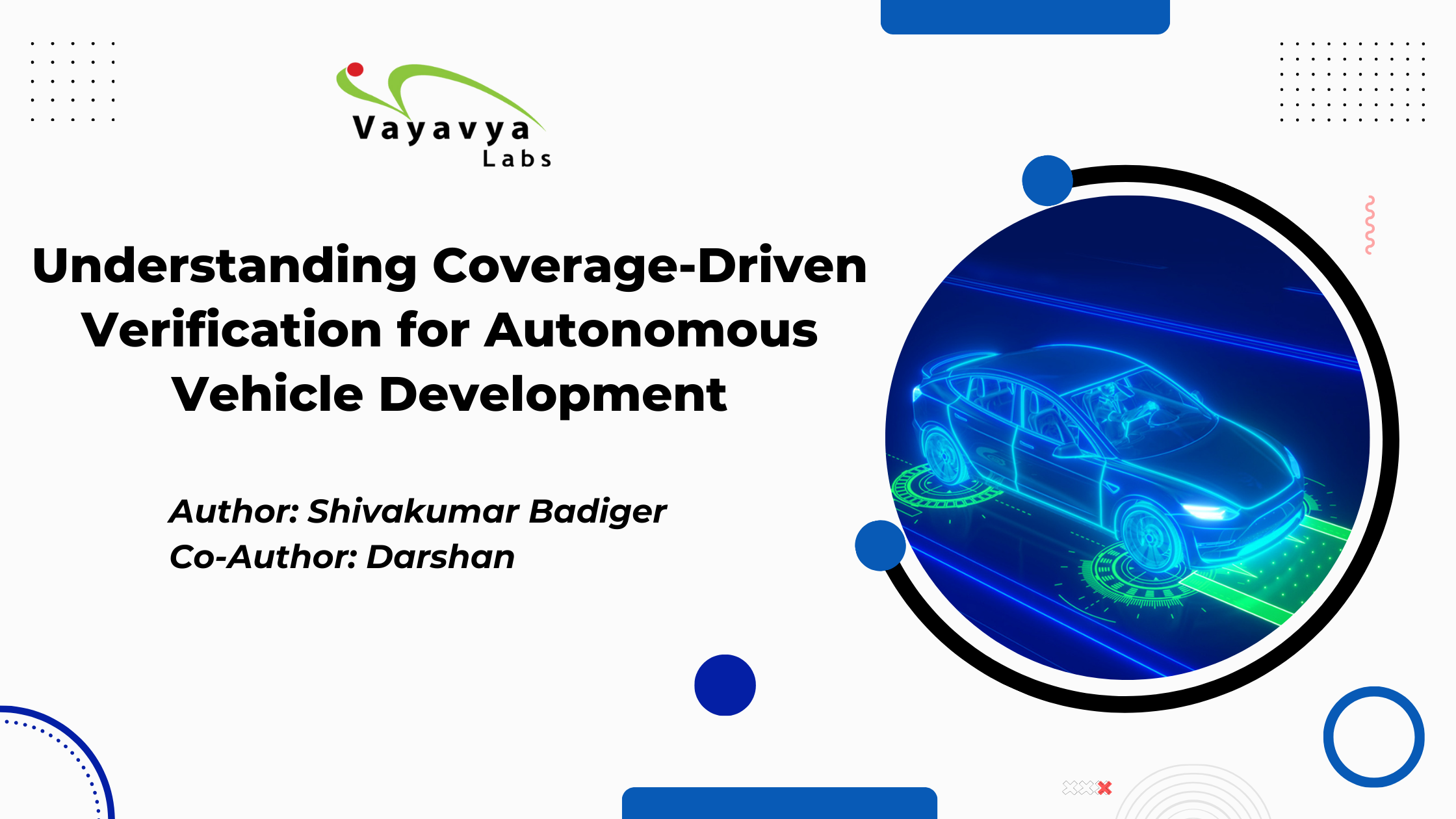Introduction
Coverage Driven Verification (CDV) represents a crucial approach to the development of autonomous vehicles, focusing on testing and verifying the correctness of their designs. This methodology identifies potential risks in the vehicle’s software, providing a comprehensive understanding of its capabilities in handling various driving scenarios. By utilizing sophisticated models created through ASAM OpenScenario DSL (formerly OpenScenario 2.0) language and other tools, engineers can analyze the impact of different inputs on the behavior of autonomous vehicles.
The Need for Coverage-Driven Verification
Coverage in CDV refers to the extent to which different scenarios, conditions, or functionalities of the vehicle’s software are systematically tested and validated. As the popularity of autonomous vehicles increases, ensuring the safety of their software becomes paramount. CDV systematically identifies potential risks associated with self-driving cars while assessing their performance in diverse driving scenarios. By leveraging advanced models through OpenScenario DSL language and other tools, engineers can analyze how different inputs to the software features may affect the behavior of an autonomous vehicle. This allows them to test each component individually or in combination with others for more complex tests.
One major benefit of CDV is that it can provide developers with insights into how their designs will react before ever taking a vehicle out on the road. It makes testing easier by providing results from simulations much earlier than driving a test vehicle through various test scenarios, a process that could be costly or dangerous depending on the situation being tested. Furthermore, CDV enables early identification and rectification of potential issues during development, ensuring efficiency and reliability before production.
CDV can probably augment the reliability of standardized testing by identifying potentially dangerous edge cases much earlier in the development cycle.
Abstract Scenarios for Autonomous Vehicles
When it comes to autonomous vehicles, testing is essential to ensure that they are safe and reliable. One way to test these systems is by creating detailed abstract scenarios that simulate real-world conditions. These scenarios can be designed using sophisticated software tools like OpenScenario DSL language which allows engineers to simulate complex driving environments with a variety of inputs and variables. Thorough testing before on-road deployment ensures that all components function correctly in various situations, ensuring safety for both drivers and pedestrians.
Abstract scenarios also provide developers with an opportunity to identify any potential risks associated with their design early on so they can be addressed quickly without compromising performance or reliability throughout development. These simulations not only enhance transparency among stakeholders but also offer invaluable insights into the behavior of designs in various conditions, ultimately ensuring a safer experience upon the release of autonomous vehicles onto public roads.
Implementing Abstract Scenarios Using ASAM OpenScenario DSL Language for CDV
OpenScenario DSL language stands out as a leading standard for creating abstract scenarios in autonomous vehicle testing. This ASAM standard, which is publicly available, allows developers to generate scenario models that accurately represent real-world conditions and drivers’ behavior. It provides a comprehensive set of features and options that allow designers to customize their scenarios according to their specific needs. In the realm of CDV, OpenScenario DSL emerges as a lynchpin for precisely defining and systematically exploring scenarios crucial for Advanced Driver Assistance Systems (ADAS) and Autonomous Driving (AD) features.
“Its expressive language enables engineers to articulate diverse driving situations, including edge cases, ensuring comprehensive test coverage. OpenScenario DSL seamlessly integrates with CDV metrics, aligning defined scenarios with verification objectives and establishing itself as an essential tool for achieving robust coverage-driven verification”. *Source: ChatGPT.
To use this language effectively, developers must first learn how to import and export Open Scenario models. By understanding the basics of this process, they can easily transfer data from one model into another without having to write code from scratch each time. Additionally, engineers should be familiar with generating compliant Open Scenario models, as these models are essential to ensuring that safety standards are met when releasing vehicles onto public roads. As such, they must pay close attention when creating scenarios that could identify potential corner cases, which could lead to serious consequences down the line if not caught in time. The flexibility and user-friendly nature of OpenScenario DSL language make it an invaluable tool for designing accurate abstract scenarios for self-driving cars. Adhering to proper procedures during importing/exporting processes and generating compliant models allows engineers to create simulations providing insights into design behavior under various conditions, facilitating the early identification of potential risks.
Examples of Autonomous Vehicle Testing
Testing edge cases, where the system encounters unexpected situations beyond its programmed scope, is crucial for autonomous vehicles. Edge cases are scenarios where the system encounters an unexpected situation that it has not been programmed to handle. It is important to test these scenarios as they can provide insight into how a vehicle may behave in unique and uncommon situations, thereby helping to identify any potential risks associated with the system before it goes out on public roads.
This type of testing usually involves running simulations with specific inputs or parameters that will trigger a response from the vehicle outside of its normal range of operation. For example, Imagine a scenario where a development team is utilizing Coverage Driven Verification (CDV) to validate the collision avoidance system of an autonomous vehicle. The CDV process begins by defining a diverse set of test scenarios, covering typical driving situations, common edge cases like sudden stops or lane changes, and extreme conditions such as adverse weather. However, as the CDV analysis unfolds, the team discovers a coverage hole – a lack of scenarios addressing unexpected interactions with road construction zones. This realization leads to an iterative adjustment in the testing approach. Acknowledging the importance of such edge cases, the team fine-tunes the test scenario set to include simulations specifically involving road construction. By doing so, CDV assists in identifying and addressing coverage holes related to corner cases, ensuring a comprehensive evaluation of the autonomous vehicle’s collision avoidance system across a spectrum of real-world driving conditions.

Conclusion
In conclusion, Coverage Driven Verification (CDV) and abstract scenarios are indispensable components of autonomous vehicle testing. CDV systematically identifies risks and assesses performance in various driving scenarios, while abstract scenarios offer valuable insights into design behavior under diverse conditions.
Leveraging sophisticated models and tools, such as OpenScenario DSL language, ensures efficient testing, transparency, and early risk identification. Ultimately, these practices contribute to the development of safer autonomous vehicles for both drivers and pedestrians on public roads.
If you’re eager to explore the exciting frontiers of Automotive Cybersecurity and Functional Safety in Automotive and more about our groundbreaking initiatives in ADAS, reach out to us!
